A decade ago, drones were an expensive hobby for a small number of enthusiasts. But the technology boom has dramatically improved their specs and competition has brought down prices. In addition, first-person view (FPV) technology became an additional powerful impetus for their development. Wireless data transmission from the on-board quadcopter camera to FPV goggles or a displey in real time very accurately mimics the feeling of a real pilot in the cockpit. This technology has allowed many to realize their dreams of flying in the sky. As a result, drones have become one of the fastest growing areas in the consumer electronics segment.
Of course, the quadcopters are the very complex devices and the full use of their potential requires some knowledge and skills. Modern models use a huge number of flight modes and intelligent shooting modes that have a significant impact on the functionality of the model.
Unfortunately, due to the lack of unification, many similar functions and modes often have different names. Moreover, companies often change terminology, for example, for their new versions. But taking as a basis the modes and functions in DJI drones, which confidently dominat for more than 10 years, we can easily identify similar functions from other manufacturers. This article provides an overview of the most popular modes and options.
Flight modes
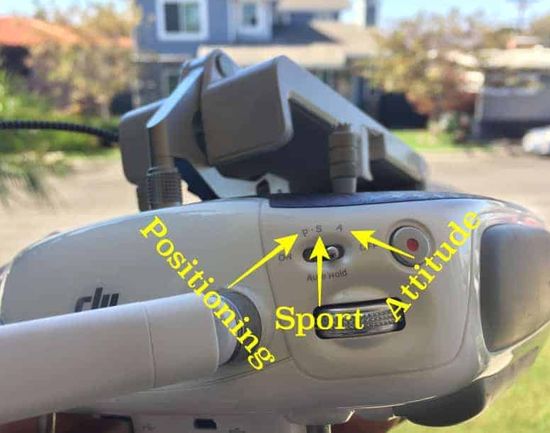
1. Beginner Mode
This mode is designed for beginners, minimizing the collision risk. It limits altitude and airspeed, and blocks the shutdown of flight sensors. In addition, the mode offers some additional options. For example, it can limit the radius of the maximum distance between the drone and the pilot, simplifying control.
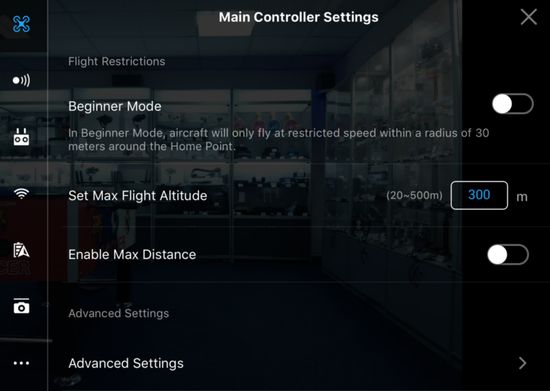
2. Positioning Mode
P-Mode uses a GPS module and optical sensors to stabilize the flight. Usually, drones support P-GPS and P-OPTI sub-modes. P-GPS uses geolocation data from the GPS module to compensate for horizontal displacement due to wind, ensuring a stable horizontal position in flight. In this mode, the quadcopter will automatically keep the original position even without control from the remote.
P-OPTI is activated when GPS signal is lost. In this case, optical sensors will ensure flight safety, preventing collisions with obstacles. Unfortunately, the range of these sensors is limited. In addition, they require sufficient lighting and do not work in the dark.
3. Attitude Mode
This mode is intended for emergency situations when GPS signal and data from optical sensors are lost. In this case, the drone maintains altitude only using the data of the on-board barometer. In fact, this flight to manual piloting.
Of course Attitude Mode requires good skills from the pilot to compensate for horizontal drift and restoring orientation. These reasons often cause the quadcopter to collide with the ground, trees, tall structures, etc.
But it’s very convenient for shooting. First, GPS compensation causes the drone to jerk in different directions periodically. Manual control does not have this problem. Secondly, Attitude Mode disables automatic braking, which allows for smoother deceleration for smoother footage.
4. Sport Mode
This mode is designed to fly at maximum speed without obstacle avoidance system using only the geolocation data.
Active Track, Gesture and Draw modes
Active Track is one of the most popular intelligent flight modes for DJI drones. It uses data from the GPS module and cameras to track objects, people, animals or cars. The drone works in automatic mode after mode activation.
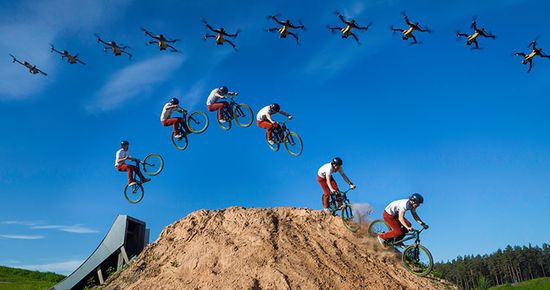
It uses three sub-modes, including Trace, Profile and Spotlight, which affect the drone position relative to the object.
For example, in Trace mode, the robot follows an object at a set distance. Profile is for tracking from a point in front of an object. Spotlight provides a dynamic mode, keeping the subject in focus even when maneuvering in different directions.
Gesture mode first appeared in the DJI Mavic series.
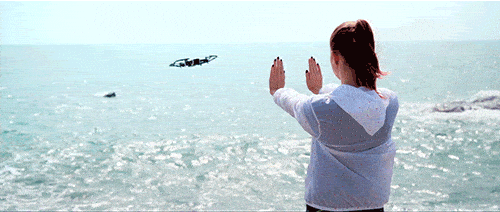
The company then installed an extended version on the compact Spark model. In Spark, the mode uses PalmLauch (drone launching from the hand after face recognition) and PalmControl (hand movement in front of its sensor).
But, of course, it’s especially handy for selfies. This option only requires the imitation of a frame in front of your face. Raising your arms up towards the drone at a 45 degree angle activates video recording. But expensive professional DJI drones usually do not support this mode.
Draw mode ensures the drone movement along a given route, which is set by drawing on the screen.
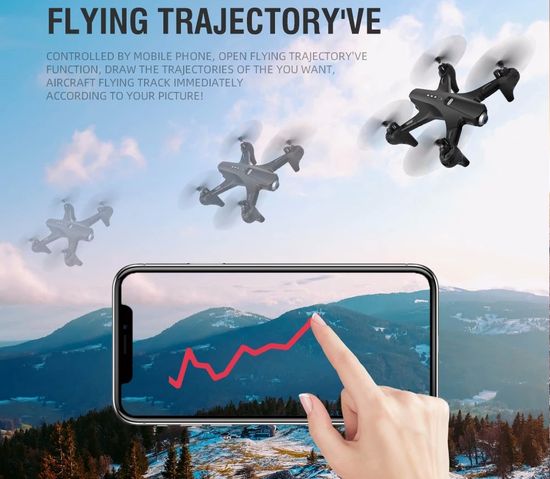
The sliders in the menu allow pilot to adjust the airspeed. But drone must have a height between 2m and 500m.
It uses two sub-modes, including Forward (camera follows the flight direction) and Free (drone rotates around its own axis and flies forward along the route). The Draw Mode is ideal for an indirect route. The rotating camera is ideal for shooting landscapes.
QuickShot, Waypoints, Terrain Follow and Points of Interest (POI) modes
As the name suggests, QuickShot Mode is for fast shooting. Selecting an object requires only highlighting it with the cursor or frame on the display.
Companies have developed many sub-modes today, including Dronie, Rocket, Helix and Circle.
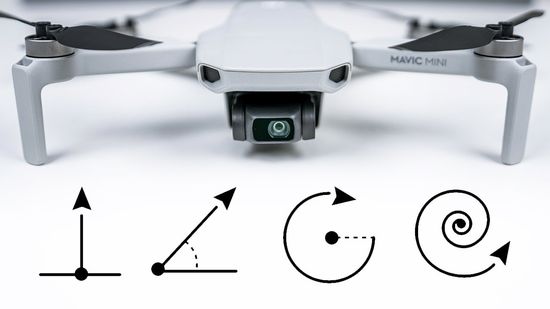
They provide video shooting in unusual styles. For example, in Dronie, the drone flies up and back, keeping focus on the subject. Rocket Mode works the same way, but robot flies vertically upwards. In Helix, the copter moves upward, rotating in a spiral. Finally, Circle Mode provides one revolution around the object.
Similar to Draw, Waypoints flies a route. But for orientation, it only uses the coordinates of indicated points.
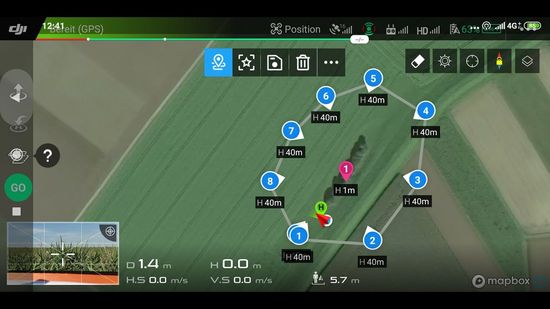
The mode is very convenient when the drone needs to fly around several points, for example, for filming or inspection.
In this mode, the drone automatically selects the most rational route from one point to another. Using coordinates for destinations further improves flight accuracy. In addition, the drone remembers the coordinates and can use them to repeat the route.
Terrain Follow is only available in models with downward facing optical sensors. In this mode, the drone maintains a constant altitude even when climbing a mountain with a slope of up to 20 degrees. The height difference setting usually ranges from 1 to 10 meters.
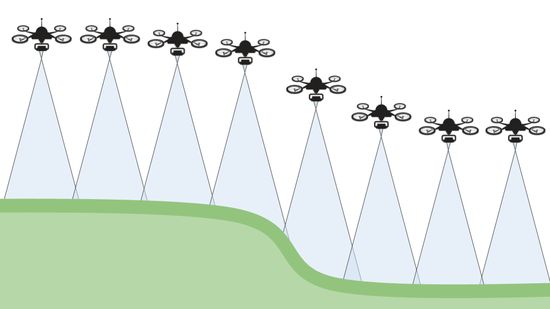
Points of Interest is very similar to the circle quickshoot mode. The drone moves in a circle, focusing the camera on the selected object.
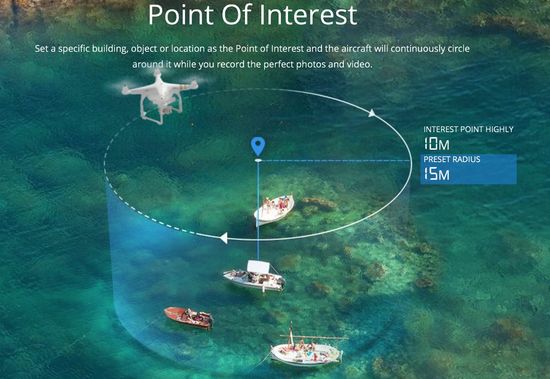
The mode retains all adjustments, including speed, altitude and flight radius. Movement along the specified pattern continues until the mode is switched. In this case, the drone hovers, focusing the camera on the subject. The Mavic Air 2 is now using POI 3.0
Spotlight Pro, Cinematic, TapFly, Tripod and Course Lock modes
In fact, Spotlight Pro is a much more complex enhanced version of the Spotlight ActiveTrack sub-mode. Today it’s only available on the DJI Inspire. Mode provides autonomous drone flight with object tracking. Its Composition sub-mode supports the selection of an area on the screen to start tracking an object. In this case, the camera starts tracking only after the object crosses the specified boundary. Of course, it’s ideal for the perimeter guard.
Cinematic Mode combines the pros of P-Mode (positioning mode) and A-Mode (orientation mode). It’s designed for smooth, high quality aerial photography. Similar to A-Mode, the drone’s motion and rotation in Cinematic Mode is slowed down more smoothly by inertia. It’s similar to Tripod (T) mode, which full uses the Obstacle Avoidance System, but limits flight speed and change of altitude.
TapFly Mode provides autonomous flight of DJI drones. In fact, the pilot only chooses the quadcopter destination. If necessary, correction of course, altitude and flight speed is carried out from a tablet or smartphone via the DJI GO app or using sticks. During flight, the Obstacle Avoidance System prevents collisions.
Tripod mode is intended for professional shooting at very close range. The flight speed usually does not exceed 4-5 kph, providing a very stable platform for filming. This mode is limited in flight speed and altitude change. In addition, its performance is highly dependent on the GPS signal quality.
Course Lock Mode is intended for flying the drone only in a given direction. It restricts the drone’s maneuvers, allowing flight only within the selected corridor in both directions. At the same time, the control of the gimbal and the camera retains the ability to shoot.
Conclusion
Of course, the choice of the optimal drone depends on its purpose and capabilities, including duration, range and speed of the flight, range and quality of stable communication, etc. In turn, they depend on the number, power and type of rotors, the number and capacity of batteries, cameras, type and power оf FPV video transmitter (VTX), antennas, etc. But as in other segments of consumer electronics, the functionality of a modern drone also depends heavily on its smart functions. Today, developers offer a huge variety of flight and shooting modes. Of course, using them effectively requires skill, but radically expanding the drone capabilities is worth the effort.
The video introduces FocusTrack on the Mavic Air 2, including Spotlight 2.0, Active Track and Point of Interest 3.0 (POI 3.0).
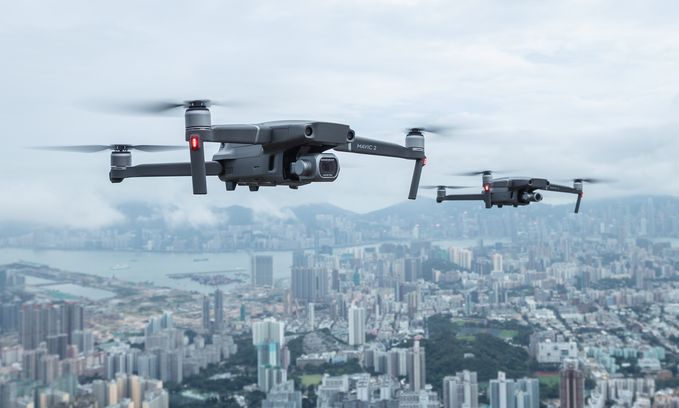
Pingback: The smallest DJI Mavic Mini drone Review - The Appliances Reviews
Pingback: DJI Mavic 2 Pro quadcopter Review - The Appliances Reviews
Pingback: What is DJI Mavic Air 2 drone Review - The Appliances Reviews
Pingback: Holy Stone drones Review - The Appliances Reviews